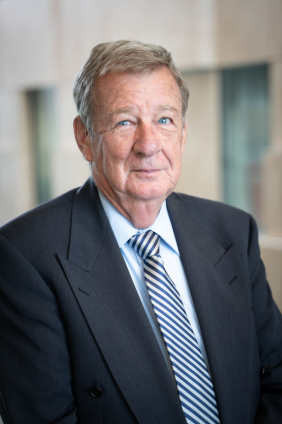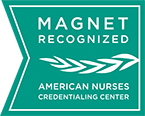
We’ve heard so much about the challenges facing the health system. This story, by the Chair of the Gold Coast Hospital and Health Service, Ian Langdon, sets the record straight.
While the challenges in healthcare are real, politically motivated media stories do not always paint an accurate picture of the world-class care offered by Gold Coast Health.
I am concerned that the unrelenting media negativity on public health not only, unfairly, erodes the confidence of the public in public health services, it can also be demoralising for staff who are absolutely giving of their best.
As Chair of Gold Coast Hospital and Health Service, I am incredibly proud of our staff, their skills, compassion and dedication and I’m appreciative of the government support we have received.
I believe it is important to put the negative commentary into context. I will only comment on the public health system on the Gold Coast, which encompasses Gold Coast University Hospital (GCUH), Robina Hospital, Varsity Lakes Day Surgery plus a range of community-based centres.
Politically fuelled media reports continue to focus on the need for more health funding, however the increase in investment into the Gold Coast public health service since my appointment as Chair of the Board in 2012 has been extraordinary.
Here are the facts:
Between 2012-13 to the current 2022-23 financial year:
- Total annual revenue has increased from $863 million to about $2 billion.
- The total number of inpatient beds has increased from 861 to 1,169
- Staff numbers have increased from 5,100 to 8,900 (full-time equivalent).
The health service moved from its former Southport location to a $1.7 billion new hospital, opened a $200 million Allied Health facility at Robina, benefitted from a $275 million Robina Hospital expansion, acquired a $45 million community health hub, and started a day surgery hospital at Varsity Lakes.
Over the next five years, more than 600 beds will be added, at an approximate cost to the taxpayer of $2 billion. This is made up of:
- Additional beds to be added between by the end of 2024
- 72 beds at GCUH
- 40 mental health beds at GCUH
- 114 beds at Robina
- 400 beds at Coomera by 2027 in a new $1.3 billion hospital.
No one could argue that the Gold Coast has been neglected in relation to government funding support for public health services.
Alongside this considerable investment and expansion, a range of clinical services have been added that previously required public patients to travel to Brisbane. Some of these include:
- Radiation Oncology
- Level 6 Cardiac Surgery
- Neonatal Intensive Care
- Nuclear medicine
- Stem Cell Transplants
- Maternal Foetal Medicine Service
- Children’s Critical Care Service
- Children’s Cardiology Specialist Services
- Children’s Hospital in the Home services.
Despite the rapid expansion of the health service bed numbers, we still see about 95% bed occupancy rate with about 86% of activity delivering non-elective health services. Not surprisingly, this leads to delays in admissions and pressures on elective surgery wait times.
When it comes to ramping, media outlets often misinterpret what ramping looks like, and as a result, the public assumes it means that patients are forced to wait in the back of an ambulance for care.
At Gold Coast Health hospitals, all patients are brought into the hospital, immediately triaged, and kept under the watchful eye of the paramedic and nurse until a bed is available.
On average, more than 180 people a day arrive at our hospitals by ambulance and for every patient arriving by ambulance, two patients come by other means.
Let’s look at yesterday for example; when there were around 600 presentations to our emergency departments in 24-hours. Of those 400 were at the Gold Coast University Hospital - the busiest emergency department in Australia.
Regardless of the method of transport by which a patient arrives, we treat the sickest first.
All of the Category 1 (the sickest) patients were seen in the clinically recommended two-minute time.
When we examine the average ambulance handover times, our average handover year-to-date to the end of December was under 33 minutes.
This is just three minutes longer than the 30-minute target. Reports of patients waiting on stretchers for five or seven hours are simply not accurate.
Adding pressure to the hospital system is the diminishing availability of GPs and GPs who bulk bill.
In previous decades, more than 40% of medical graduates became GPs; today, only about 14% of medical graduates pursue this.
Many patients who can’t get a timely GP appointment end up seeking treatment from a hospital ED.
Each year, a smaller percentage of people choose to pay for private health insurance, and often, even those who do pay prefer to attend our public hospitals to avoid the gap fee.
Each weekday, our clinicians deliver more than 3,280 outpatient appointments.
In the past financial year, clinicians provided more than 892,000 specialist and non specialist appointments. More than 200,000 inpatient stays were recorded at our hospitals.
Each year, the health service performs around 40,000 surgeries, delivers more than 5,300 babies and provides around 200,000 clinical visits to patients in their own homes.
We are one of only three hospitals in Australia offering Maternal Foetal Medicine screening in the first trimester for the early detection of issues for mother and baby.
Our Interventional Neuroradiology service is known across the globe for its life-saving work with patients who have severe and life-threatening brain aneurysms, stroke, and other serious disorders of the brain and spine.
Gold Coast University Hospital and Robina Hospital were recently named in Newsweek’s 2022 World’s Best Hospitals in the World list.
Recently, Gold Coast University Hospital was named in Newsweek’s 2023 World’s Best Smart Hospitals – 218 in the world and the fourth best in Australia.
While the challenges ahead in health care are many, I hope this has reminded you of what a world-class health service we do have, and I hope you are as proud as I am of the excellent care Team Gold Coast Health provides to residents every day.



